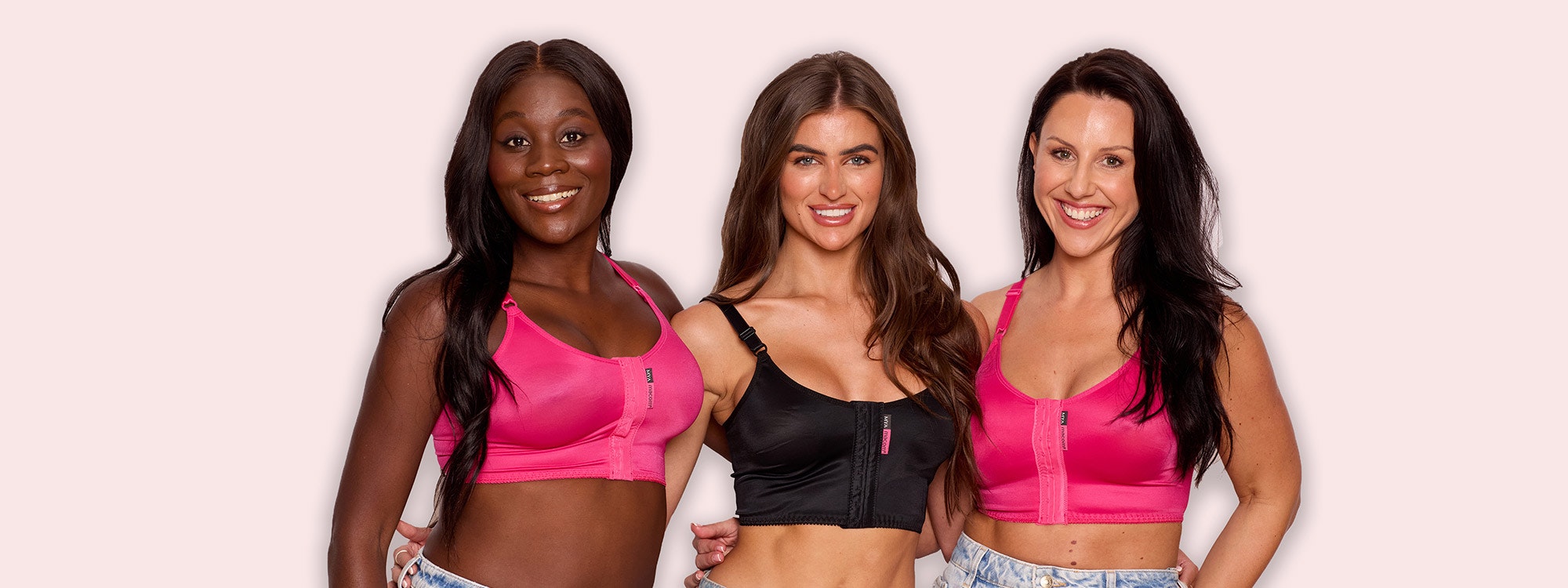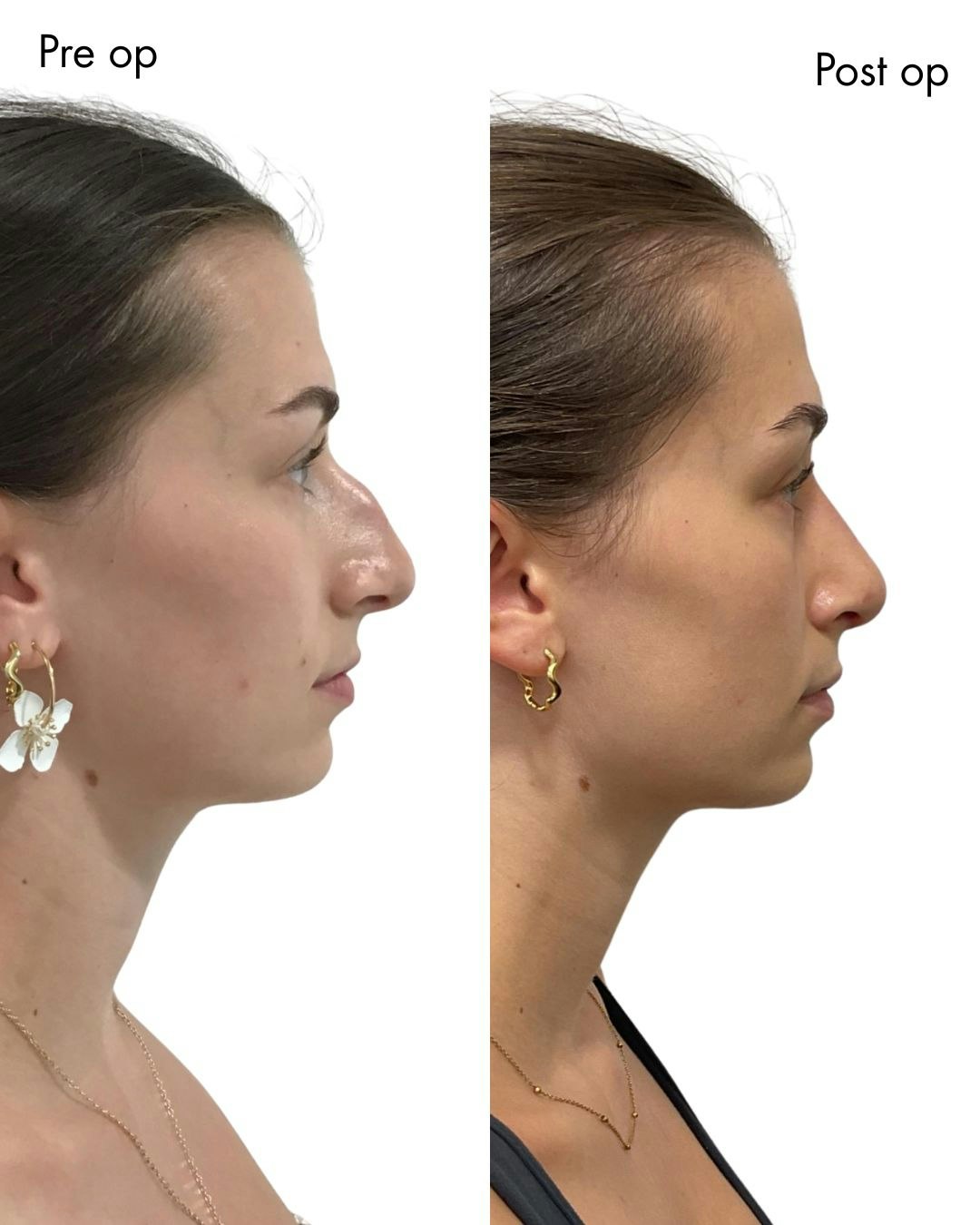Types of breast asymmetry
Breast asymmetry appears differently in every woman that experiences it. Here are the three different types:
Anisomastia is when a difference appears in the overall volume and size of the breast.
Anisothelia is when the nipples and areolas differ from one another.
Combined asymmetry is a mixture of anismastia and anisothelia.
Causes of asymmetrical breasts
Breast asymmetry can occur naturally and simply be down to how the breasts have developed as you grew older. However, there can be specific causes of asymmetrical breasts.
Hormonal changes are a common reason for asymmetrical boobs. These include puberty, taking hormonal contraception, and ovulation. While these may be temporary changes during the menstrual cycle, breast asymmetry presents permanently for some women, and can cause insecurity and worry for many.
Another reason for asymmetrical boobs is experiencing physical trauma on or around the breast before it’s fully developed. This can stunt growth, making the breasts appear uneven.
During pregnancy and while breastfeeding, women may notice a difference in their breast and nipple sizes, particularly if their baby feeds more on one breast than the other.
While there are other causes of asymmetrical breasts, if you notice a sudden difference in the way your breasts look and feel, it’s recommended you visit your GP to check for any abnormalities, as a sudden change in breast volume or nipple size could be a sign of breast cancer.
How common is breast asymmetry?
Believe it or not, it’s more common for women to have asymmetrical breasts than ones that are exactly the same.
Whether it be a temporary (hormonal) or permanent change, more than half of all women experience breast asymmetry in their lifetime - which can lead to low self-esteem, poor confidence in social situations, and difficulty buying bras and clothes that fit correctly.
However, if there is a sudden change or a large variation in breast volume or nipple size (or both), it’s advised you seek out medical advice.
I have asymmetrical breasts, do I need to see a doctor?
While asymmetrical breasts are a very common issue in women, it’s a good idea to get them checked out by your GP if you notice any sudden changes:
Swelling in one of your breasts
Pain
Nipple discharge or fluid
Abnormal nipple changes
A lump that’s suddenly appeared on one of your breasts
Large variation between the size of your breasts
Red, itchy, flaky, firm or dimpled skin around the breast
The tissue around the breast or under the arm becomes firm or thick
Does breast asymmetry go away?
As breast asymmetry can be a result of hormonal changes, it can come and go over time, becoming more or less visible as you go through life.
However, for some women, their breasts have always been greatly asymmetrical, so they struggle to find flattering and well-fitting clothes, bras, and bikini tops.
If they’ve been in touch with their GP and found no serious medical cause for concern regarding their asymmetrical breasts, it’s common to consider a breast augmentation.
Correcting breast asymmetry
Breast asymmetry can be corrected using cosmetic surgery.
Correcting breast asymmetry is done in a number of ways, depending on the patient and the look they want to achieve.
At your consultation, a MYA surgeon will determine the best surgery type for you - this could be breast enlargement, breast uplift (Mastopexy), breast reduction or a combination to achieve a more symmetrical look.
An augmented mastopexy (where a breast uplift is combined with implants) or nipple lift/reduction may also be required.
Breast asymmetry surgery has a starting cost of £5,795 and takes around 2 hours in theatre, but the total cost and length of the treatment are dependent on the patient, their current breasts and the surgeon’s suggested treatment plan.
One of our MYA patients had a breast asymmetry correction after having uneven breasts due to weight loss. Because of this difference in size and shape, she often avoided wearing bikinis and clothes shopping as a whole, leaving her feeling insecure. She told us that having breast asymmetry surgery made her feel so much more confident and more comfortable in her own skin. Read her story today - ‘My Asymmetric Breast Reduction at 23’
Contact MYA Cosmetic Surgery for more information
If you have asymmetrical boobs and are interested in breast asymmetry correction, MYA Cosmetic Surgery have a team of surgeons and nurses who are ready to help.
To learn more about our breast asymmetry procedures, don’t hesitate to contact us today.










